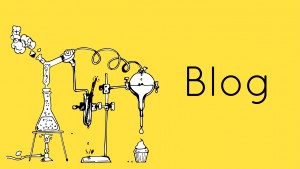In this series of blog posts, we’re looking at the philosophical view of science put forward by Charles S. Peirce, the late 19th century American polymath best known as the founder of pragmatism. Last week we finished up with the question—really Peirce’s question—When and why do we engage in the process of rational inquiry, and under what conditions do we stop?
For all the build-up in the last post, Peirce’s answer can be given in a single sentence. “The irritation of doubt,” he writes, “causes a struggle to attain a state of belief.” That’s the whole idea. Deep down, we want nothing more than to get from A to B—or, in this case, from “d” to “b.” Peirce means that it is characteristic of our nature as cogitating critters to doubt, to feel that doubt as an itch, and to scratch our way through inquiry to the “calm and satisfactory” state of belief. Or as he puts it in another essay, “the production of belief is the sole function of thought.” What a provocative claim! Notice that Peirce isn’t saying that the production of true belief is the sole function of thought, but rather belief full stop. And while we do happen to think that our beliefs are true, our real goal, Peirce insists, is the mere “settlement of opinion” – the cessation of doubt.
If this really is our ultimate goal, then we should be interested to know the best doubt-scratching method available, holding truth aside. Peirce proposes four methods, but the two most relevant to the point I want to make are what he calls “the method of tenacity,” which I’ll explain in a moment, and then our main topic, the scientific method. The method of tenacity is that way of getting rid of doubt according to which a person clings to her beliefs, whatever they are, in the face of any and all contradictory information. Religious fundamentalism, to use that example, is probably a very good case study. The scientific method, on the other hand, is the one we know and love: it involves the careful testing of hypotheses against evidence, and the giving-up of ideas that can’t withstand empirical scrutiny.
How do these two methods fare in relieving doubt—in getting us from “d” to “b”? The method of tenacity, Peirce would have us believe, can be effective in some eras and for some people, but ultimately suffers from a finite shelf life. Eventually—given enough time, and enough interpersonal and intercultural exchange—this method is bound to dissolve under the corrosive sting of a single powerful impulse, letting pesky doubt seep back in. To say what this impulse is, Peirce asks us first to consider the jumble of co-cancelling beliefs that you’ll find between persons, cultures, and nations, and across historical boundaries of time. Faced with this tangle of contradictions, Peirce says, certain individuals “will find that other men think differently from [them] … that [the others’] opinions are quite as good as [their] own, and this will shake [their] confidence in [their] belief[s].” Elsewhere Peirce describes the impulse like this:
… in the most priestridden states some individuals will be found who are raised above that condition. These men possess a wider sort of social feeling; they see that men in other countries and in other ages have held to very different beliefs from those which they themselves have been brought up to believe; and they cannot help seeing that it is the mere accident of their having been taught as they have, and of their having been surrounded with the manners and associations they have, that has caused them to believe as they do and not far differently. And their candor cannot resist the reflection that there is no reason to rate their own views at a higher value than those of other nations and other centuries; and this gives rise to doubts in their minds.
Here I want to make my first real protest, though I have to qualify it in advance by confessing that this passage strikes me as lovely. It describes a way of thinking I admire, and even aspire to. I also think there is good evidence that this “social impulse” exists, and I reckon Peirce has captured both its essence and effect. But here’s the rub: it may be a rarer phenomenon in our species than can meet the demands of his argument. I say this because Peirce’s whole discussion rests on his conception of human nature. He wants to pin down the ‘logical’ and the ‘animal’ deep within in us (see Part I), spell out their interrelations, and then test his various doubt-remedies against the final picture. So the question becomes, How wide is that segment of our species through which the “social impulse” truly and vitally flows? If it’s small enough, we might have to think of such individuals as exceptional, rather than as signposts to human nature, which could undermine Peirce’s story.
Peirce of course is optimistic: the impulse is “too strong in man to be suppressed,” he writes, “without danger of destroying the human species.” For my part, I’m not so sure. Tune in next time to see why …
![Can Science Tell Us What’s Objectively True? Part 2 In this series of blog posts, we’re looking at the philosophical view of science put forward by Charles S. Peirce, the late 19th century American […]](/wp-content/uploads/2011/10/Blog-image-01-620x300.jpg)
